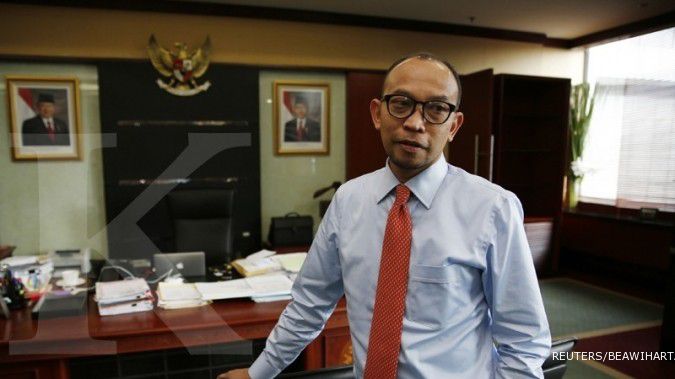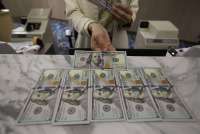Indonesian stocks traded in the red zone on Monday as equity assets were dumped, while the rupiah took another dive, and remained defenseless amid the worsening current account deficit.
The bearish trend, which is also occurring in other Southeast Asian markets, will likely continue throughout the third quarter of the year.
Analysts say investors have pulled their money out from Indonesia due to slowing economic growth, surging inflation, the ballooning current account deficit and concerns that global liquidity would dry up over the US’ stimulus tapering.
The Indonesia Stock Exchange (IDX) recorded 292 stocks down, 171 unchanged and only 20 ending higher on Monday. As a result, the benchmark Jakarta Composite Index (JCI) plunged 5.58 percent on Monday — the biggest daily drop since October 2011 — to close at 4,313.52.
JCI’s Monday closing wiped out all of its growth this year and became the worst performer in Southeast Asia.
The biggest hit came after the central bank last Friday announced that the country’s current account deficit reached US$9.8 billion — or 4.4 percent of gross domestic product (GDP) — passing the so-called safe level of 2 to 2.5 percent.
This added to the already negative economic indicators, such as GDP growth which grew by 5.8 percent in the second quarter of the year — the slowest pace in three years.
The consumer price index also reached 8.6 percent in July, the highest in four years after the fuel subsidy cut.
Massive selloffs in the stock market retreated on Friday and continued for the second day on Monday, when foreign investors dumped Rp 1.78 trillion worth of stocks, the biggest amount since June. Year-to-date outflow in the stock market reached Rp 4.12 trillion as of Monday.
Harry Su from Bahana Securities said the market would be able to rebound on several factors, including the impact of the subsidized fuel price increase, which had eased the burden of oil imports; inflation figures; and the clear timing of the US Federal Reserve’s stimulus tapering.
“However [...] the Fed stimulus tapering is likely to happen in September. If there is an up trend, it will only be seen in November,” he said, explaining that the market would likely start to improve in the final quarter of the year.
The Fed is scheduled to hold a meeting on Wednesday, when it is expected to give a clear view of the US’ plan.
Speculation over the stimulus tapering also put pressure on global currencies, including those in the Asian region.
Prices from local banks, compiled by Bloomberg, showed the rupiah touched 10,500 per dollar on Monday before ending at 10,490. The currency has declined by 5.4 percent this quarter, the worst performer among Asia’s 11 most-traded currencies.
According to Bank Indonesia, the rupiah traded at 10,451 per dollar on Monday.
The widening deficit in a country’s current account reflects the supply and demand of the dollar in an economy, this also weakened the rupiah, analysts say.
Finance Minister Chatib Basri tried to calm the market, saying there the current account deficit was nothing to worry about.
“I think the current account deficit would be lower in the third quarter than the previous quarter because of oil. Oil imports will be lower in the third quarter,” Chatib said late on Monday.
Mandiri Sekuritas economist Aldian Taloputra said the rupiah would only stabilize in the fourth quarter of the year at the earliest as the current account deficit was expected to ease due to factors, such as declining imports of food and less durable consumer goods. Industry players would also import less due to the weakening rupiah.
But Citi Research economist Helmi Arman questioned whether the slowdown would keep up pace with the slide in exports.
“In an environment where the slide in exports is occurring faster, policy makers must transmit a continued signal of policy tightening.” (Raras Cahyafitri and Tassia Sipahutar)
/2011/02/04/1222481077p.jpg)














